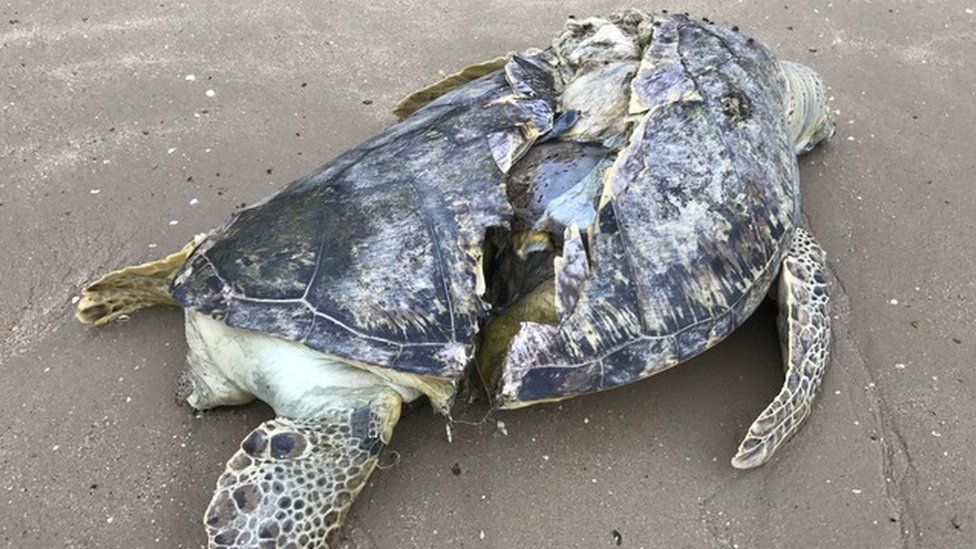To determine if a turtle is dead, look for lack of movement and unresponsiveness to touch. It’s important to observe the turtle closely for signs of life or lack thereof.
Turtles may not always display obvious signs of death, so a thorough assessment is crucial. When checking for signs of life in a turtle, start by gently prodding its limbs and shell. A healthy turtle will respond by retracting its limbs or showing some movement.
Lack of any response could indicate that the turtle has passed away. Additionally, check for any foul odor or discoloration, which may also suggest the turtle is deceased. Remember to handle the turtle with care and respect during this assessment process.

Credit: nbc16.com
Signs Of A Dead Turtle
Turtles are fascinating creatures, and it’s important to recognize the signs of a dead turtle to ensure their well-being. Whether you’re a turtle owner or encounter a wild turtle, understanding the physical and behavioral signs of a dead turtle is crucial.
Physical Signs
- Shell Damage: Look for cracks, holes, or soft spots on the turtle’s shell.
- Unresponsive Limbs: Gently touch the turtle’s limbs; if there is no response, it could indicate a problem.
- Foul Odor: A strong, unpleasant smell emanating from the turtle may suggest decay.
- Discoloration: Notice any unusual discoloration on the turtle’s body, particularly around the eyes and mouth.
Behavioral Signs
- Lack of Movement: A dead turtle will not exhibit any movement, including the absence of blinking or retracting into its shell.
- No Response to Stimuli: If the turtle does not react to touch or sound, it could signal a state of death.
- Sunken Eyes: Check for sunken or cloudy eyes, which are indicators of a deceased turtle.
- No Breathing: Observe for any breathing movements; a lack of respiratory activity is a clear sign of death.
Physical Examination
When trying to determine if a turtle is alive or dead, performing a physical examination is crucial. This involves closely observing the turtle’s body and looking for specific signs that can indicate its state. By checking for movement, examining the eyes and limbs, and noting other physical characteristics, you can gather important clues to assess the turtle’s condition.
Checking For Movement
Start by gently prodding the turtle’s limbs or gently tapping its shell to see if there is any response. Observe if there is any slight movement or twitching, which could indicate signs of life. Additionally, place the turtle on a flat surface and see if it attempts to move or right itself. Any signs of movement suggest that the turtle may still be alive.
Examining The Eyes And Limbs
Look closely at the turtle’s eyes for any signs of dullness or cloudiness, as clear and alert eyes are indicative of life. Examine the limbs for any stiffness or flexibility. Gently extend and retract the limbs to see if there is any resistance or responsiveness. Furthermore, check for any signs of injury or trauma on the limbs, as this could also provide insight into the turtle’s condition.
Response Tests
Response Tests are crucial in determining whether a turtle is alive or deceased. By conducting specific response tests, you can assess various indicators that can help determine the turtle’s condition.
Poking Reflex Test
The poking reflex test involves gently prodding the turtle’s body or limbs to observe for any response. If the turtle retracts its head, legs, or tail upon being poked, it indicates a sign of life. This reaction suggests that the turtle is still responsive and potentially alive.
Shell Sensitivity Test
Another response test is the shell sensitivity test. By lightly tapping or stroking the turtle’s shell, particularly the area near the head and legs, you can gauge its sensitivity. If the turtle shows any signs of discomfort, such as retracting or twitching, it suggests that it is alive and responsive.
Seeking Professional Help
When it comes to determining if a turtle is dead, seeking professional help is crucial. Contacting a vet or reporting to wildlife authorities can provide the necessary expertise.
Contacting A Vet
Vets have the knowledge and experience to assess the health and condition of turtles. Contact a vet specializing in reptiles for accurate diagnosis.
Reporting To Wildlife Authorities
Wildlife authorities can offer guidance on handling deceased turtles ethically. Notify them to ensure proper disposal and potential investigation.
Preventing Turtle Deaths
Identifying a dead turtle can be challenging, but signs to look for include lack of movement, unresponsive eyes, and a foul odor. It’s important to act swiftly when encountering a potentially deceased turtle to prevent further harm to the environment.
Understanding Environmental Threats
Turtles are vulnerable to various environmental threats that can lead to their untimely demise. Pollution, habitat destruction, and climate change are some of the primary dangers that turtles face in their natural habitats.
Pollution, such as plastic waste and chemicals, can harm turtles when they mistake it for food. Habitat destruction caused by human activities like construction and deforestation can displace turtles from their homes, making it difficult for them to survive.
Promoting Conservation Efforts
Conservation efforts play a crucial role in protecting turtle populations and ensuring their survival for future generations. By raising awareness about the importance of turtles and their habitats, we can encourage people to take action to protect these vulnerable creatures.
Engaging in beach clean-ups, supporting turtle rescue organizations, and advocating for stricter environmental regulations are all ways in which individuals can contribute to turtle conservation efforts.

Credit: www.bbc.co.uk

Credit: m.youtube.com
Conclusion
It can be challenging to determine whether a turtle is dead or alive, especially if you are not familiar with their behaviors and physical characteristics. However, there are some telltale signs that can help you identify whether a turtle is deceased or not.
By checking for signs of breathing, movement, and responsiveness, you can quickly assess the turtle’s status and take the necessary steps to ensure their well-being. Remember, it is always best to seek professional help when in doubt.






Leave a Reply